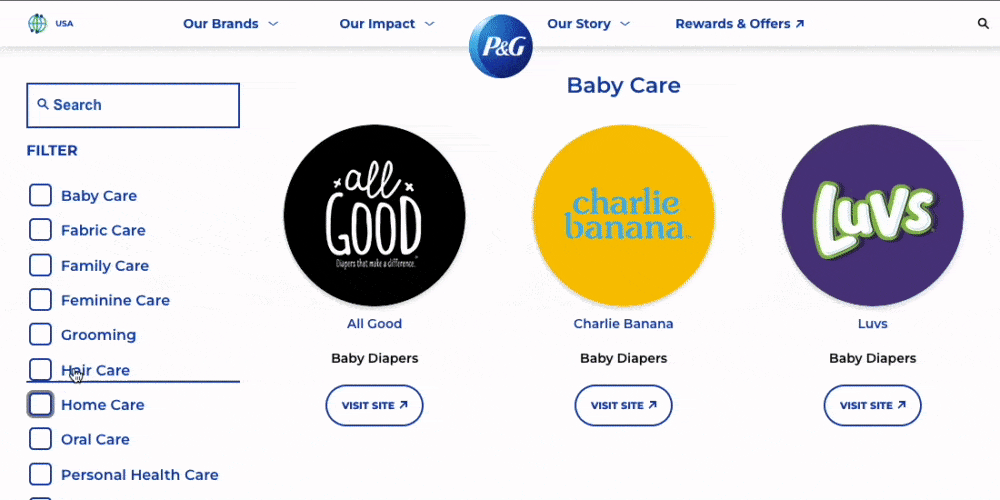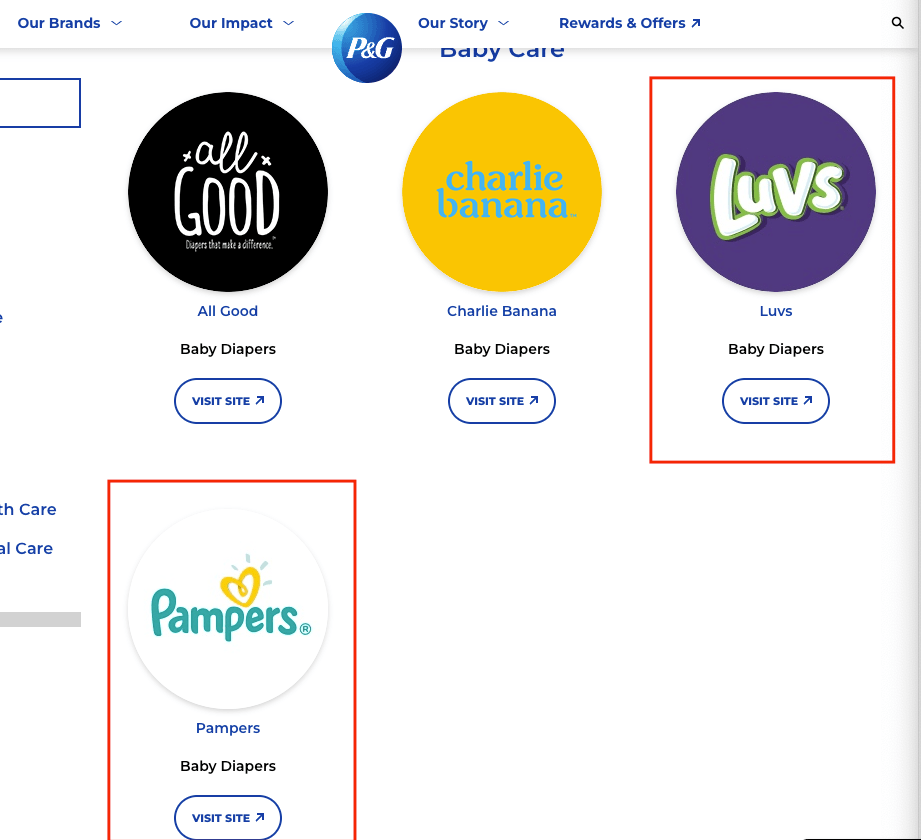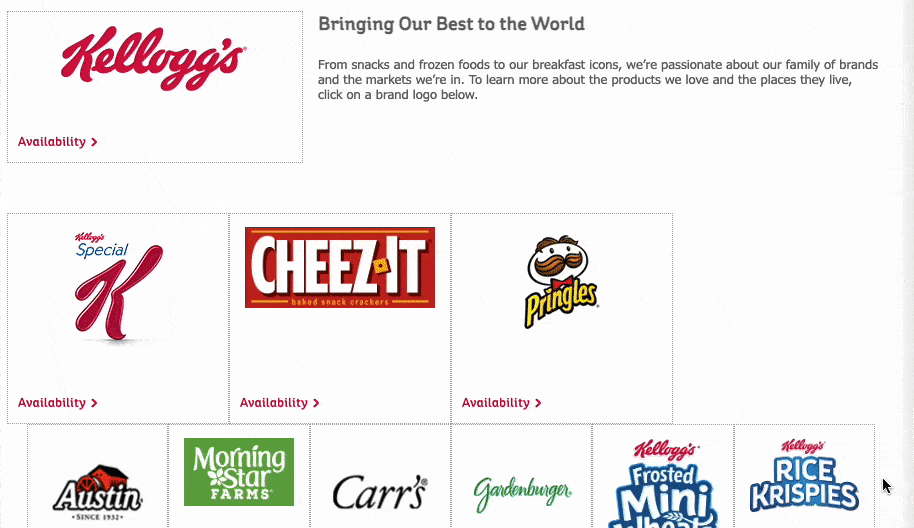Did you know that the same parent company makes herbal Essences and Febreze?
Or that Crest toothpaste and Charmin toilet paper also come from that same corporation?
When you look at these brands in the grocery store, you may think they’re from separate companies –– but they’re not. All these brands are part of Proctor and Gamble’s brand architecture.
But what is brand architecture?
On this page, we’ll provide you with everything you need to know about branding architecture, like:
- What is brand architecture?
- Types of brand architecture
- Why a clear brand architecture matters
Keep reading to learn more!
What is brand architecture?
Brand architecture is the organizational structure of your company’s branding. It involves organizing assets like your products, services, and sub-brands. This structure shows consumers how sub-brands are part of a bigger organization and how these sub-brands relate to each other.
3 types of brand architecture
There are three main types of branding architecture you can use for your business:
- House of brands
- Branded house
- Endorsed brands
Let’s dive into more detail about these different types of brand architecture:
1. House of brands
The house of brands structure is that like Proctor and Gamble (P&G) –– the corporation has multiple, distinct brands in different sectors. P&G has brands from baby care to feminine care to home care.
The house of brands branding architecture has a master brand that can have competing brands in the same segments. P&G, for example, owns Luvs and Pampers, which are two competing diaper brands.
These companies can have competing brands in the same sector because the brand structure is set up so that they don’t affect one another. If there were a product issue with Luvs that makes headlines, for example, it would only impact the credibility of Luvs and not Pampers.
With the house of brands structure, each brand is distinct and its own entity, despite being owned by the same master brand.
Companies that use the house of brands branding architecture don’t promote the multiple brands they own. Their products may feature a small logo of the master brand, or they may have a written statement that says the brand is part of the master brand.
The master brand may refrain from promoting their multiple brands in the same sector, so it doesn’t negatively impact quality opinions or pricing. Some people may think, for example, that Luvs is a terrible quality diaper, while Pampers is amazing. Keeping these brands separate is best for maintaining brand image.
2. Branded house
The branded house architecture is when a brand has multiple entities that maintain the master brand’s name.
A prime example of this is Apple. Apple’s brand architecture includes:
- Apple Music
- Apple Watch
- Apple TV
- Apple iPhone
- Apple iPad
- Apple iMac
- And more
People who encounter these products know they’re tied to Apple because the master brand’s name is attached to each product.
Companies offer related products or services to the master brand with this structure. With the House of Brands, the company’s brands can span across different and unrelated sectors –– you may have a brand in household cleaning and beauty care.
The branded house structure focuses on specific areas tied to the original brand. Apple, for example, is a tech company. Their products are tech-related –– phones, digital watches, tablets, and computers.
Apple wouldn’t create a food product line because it doesn’t fit their branding architecture.
This brand architecture is used to help build and increase brand loyalty. These brands increase offerings with their name attached to help improve their reach, brand loyalty, and customer base.
3. Endorsed brands
The endorsed brand structure is the last type of brand architecture we’ll cover on this list. With this brand architecture, the master brand is the parent, and the associated brands are the siblings. The siblings benefit from their connection to the master brand.
An example of an endorsed brand branding architecture is Kellogg’s. Kellogg’s offers numerous brand names endorsed by their company, from Pringles to Pop-tarts to Frosted Flakes. All these brands have Kellogg’s brand name attached to them.
For these brands, Kellogg’s serves as the endorser. Their logo is attached to all product packaging, so you know it’s a Kellogg brand.
With the endorsed brand branding architecture, both the master and sibling brands benefit from the relationship. The trust of the master brand helps build up the products, and the quality of the products builds up the master brand.
Why does brand architecture matter?
One of the biggest benefits of using a brand architecture is reducing your marketing costs. When you have better organization of what you offer, you can market more effectively.
Creating a brand architecture enables you to generate cross-promotion between your brands. You can market products together instead of separately, which allows you to save money on promoting your products.
1. You refine your messaging
When you promote your business to people, you want to send the right message to get them to buy your products or use your services. Creating a brand architecture gives you a clearer understanding of your brand positioning.
If you offer multiple products or services, or if you have a few companies working under you, brand architecture will help you stay organized. You can see how your entities are related to create a stronger and more inclusive brand message.
Understanding your brand positioning helps you market your company more effectively. So, not only do you create better messaging, but you also save marketing dollars by marketing to your audience more effectively.
2. You understand your position in your market
One of the most significant benefits of creating a branding architecture is that you can better understand your business’s position in your market. When you break down the entities of your company, you have a better picture of your business.
For example, if you recently acquired two small companies, you can create a brand architecture to see what those companies add to your master brand. You’ll get the full picture of what you offer in your market so that you can market your business more effectively.






